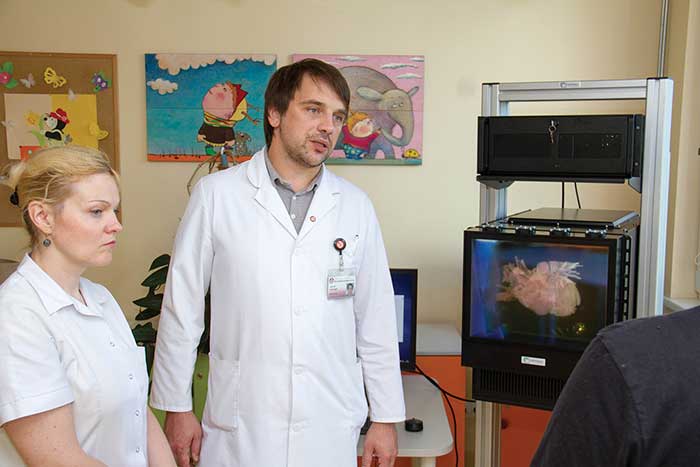Imaging has historically only offered a two-dimensional view of bodies and cells, despite their 3D properties. Now, 3D imaging and data are finding expanded application, particularly in medicine and the life sciences.
 While human bodies and single cells are three-dimensional, in the past, imaging of them often was not. Data might be captured in two-dimensional slices during a computed tomography, magnetic resonance, ultrasound or even microscope study. But the interpretation of how those 2D images related to real-world medical and life science structures sometimes required specialized expertise. Now, advances in display-related technology and software are changing that, with benefits to medicine and the biosciences ranging from education to operation planning.
Some of those advances borrow from fields far removed from the life sciences. That was the case for Franz Fellner, a professor of radiology and head of the Central Radiology Institute at Kepler University Hospital in Linz, Austria. He has been putting to use 3D rendering based on techniques similar to those found in movies.
“I use cinematic rendering to create anatomical figures for my conventional educational lessons using PowerPoint files,” he said. Fellner does this working from CT and MRI data sets, turning these into 3D anatomy lessons, both for medical students and the public.
This is done in a high-resolution 8K projection room that offers dual 16 × 9-m viewing surfaces on the walls and floor. It allows stereoscopic 3D images, thereby transforming image slices into an assembled lifelike whole.
The image processing technology behind this has been developed over the past few years by what is now Siemens Healthineers, a separately managed health care business of Siemens AG. The company provides CT, MRI, PET and x-ray devices, with every method capable of 3D imaging.
While human bodies and single cells are three-dimensional, in the past, imaging of them often was not. Data might be captured in two-dimensional slices during a computed tomography, magnetic resonance, ultrasound or even microscope study. But the interpretation of how those 2D images related to real-world medical and life science structures sometimes required specialized expertise. Now, advances in display-related technology and software are changing that, with benefits to medicine and the biosciences ranging from education to operation planning.
Some of those advances borrow from fields far removed from the life sciences. That was the case for Franz Fellner, a professor of radiology and head of the Central Radiology Institute at Kepler University Hospital in Linz, Austria. He has been putting to use 3D rendering based on techniques similar to those found in movies.
“I use cinematic rendering to create anatomical figures for my conventional educational lessons using PowerPoint files,” he said. Fellner does this working from CT and MRI data sets, turning these into 3D anatomy lessons, both for medical students and the public.
This is done in a high-resolution 8K projection room that offers dual 16 × 9-m viewing surfaces on the walls and floor. It allows stereoscopic 3D images, thereby transforming image slices into an assembled lifelike whole.
The image processing technology behind this has been developed over the past few years by what is now Siemens Healthineers, a separately managed health care business of Siemens AG. The company provides CT, MRI, PET and x-ray devices, with every method capable of 3D imaging.
Member Exclusive: To read the complete article, please Login or Register